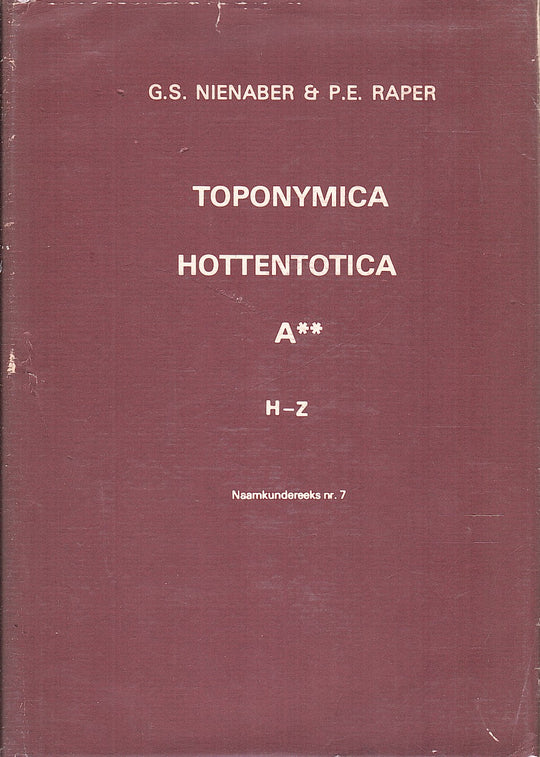eng
We find the thinking trips of Dr of Vredes confusing. As we understand, he says about the following. There is a certain mountain on the north bank of the Orange River. If the Namas stood and spy first, they call it mobous, about eye-high, of mu-s = eye, but the 'high' glad to us dark, linguistically (is -boes 'high', if so, how?). If the Korana-brotherly climbed with about the same language on the same mountain, later, call them, the Coras, it keimus, literally great-eye, linguistically accountable. And then moeeboss disappears for the mountain and for the place at the foot of the mountain. Or is moebouoes and keimoes interchangeable statements? It does, since both, the Namas and the Coras, retained the MU (s) = eye, the one tribe before the word group, the second as closing component, and -boes and Kei- is not thinking as exchange forms. Dr of Peeds can o.i. He looked in the first component to accept the word MU (S) = or to accept eye. Is the -bees (spelling as at Gordon) to connect with Nama be-s = runaway (from water?) With 'eye' here as a source, to see fountain, such as with Keimoes? Without an indication, we do not know how to interpret the closing member. Mu cattle may be connected to Dr of Vredes) 'Look (mu) away or at (-be-s = gone)', or, as it looks to us, mu- = eye, -be- for locative, And -s locatively more determined from a source / fountain, the whole fountain eye '...?
afr
Ons vind die gedagtetoertjies van dr Van Vreeden verwarrend. Soos ons dit verstaan, se hy ongeveer die volgende. Daar is 'n sekere berg aan die noord- oewer van die Oranjerivier. As die Namas as eerste daarop staan en spioneer, noem hulle dit Moeboes, ongeveer Oog-hoog, van mu-s = oog, maar die 'hoog' bly vir ons duister, taalkundig gesien (is -boes 'hoog', indien wel, hoe?). As dan die Korana-broedervolk met ongeveer dieselfde taal op dieselfde berg klim, later, dan noem hulle, die Koras, dit Keimoes, letterlik Groot-Oog, taalkundig verantwoordbaar. En dan verdwyn Moeboes vir die berg en vir die plek aan die voet van die berg. Of is Moeboes en Keimoes verwisselbare uitsprake? Dit wel nie, aangesien albei, die Namas en die Koras, die mu-(s) = oog behou het, die een stam voor die woordgroep, die tweede as slotkomponent, en -boes en kei- is nie te dink as wisselvorme nie. Dr Van Vreeden kan o.i. gelyk he om in die eerste komponent die woord mu-(s) = sien of oog te aanvaar. Is die -bees (spelling soos by Gordon) te verbind met Nama be-s = wegloop (van water?) met 'oog' hier as bron, fontein te sien, soos by Keimoes? Sonder ’n aanduiding weet ons nie hoe om die slotlid te interpreteer nie. Mu-bees is dalkfin aansluiting by dr Van Vreeden) 'Kyk (mu) weg of ver- by (-be-s = weg)', of, soos dit vir ons lyk, mu- = oog, -be- vir lokatief, en -s lokatief meer bepaaldelik van ’n bron/fontein, die geheel Fonteinoog'...?




